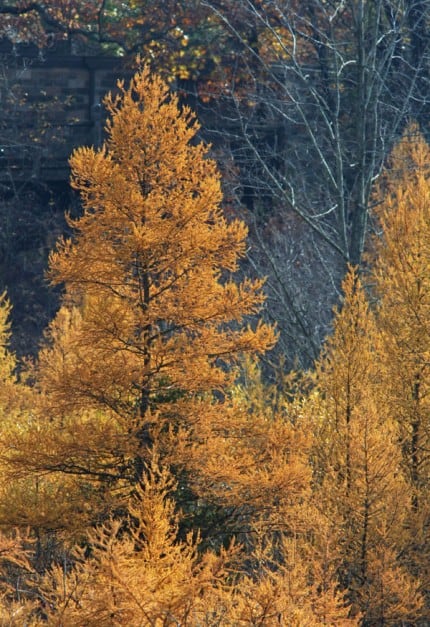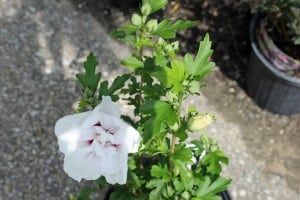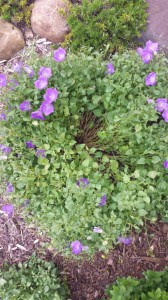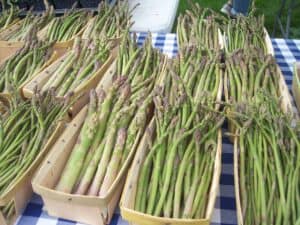
(Chelsea Update would like to thank Jennifer Fairfield for the information in this column. This is part 3 of a 4-part series, which began on Tuesday.)
Fertilizing
If you’ve been fertilizing your perennials, shrubs and trees this summer, now’s the time to stop. Fertilizing encourages new growth, and that new growth will likely not have enough time to harden before it gets cold.

Trees Turning
I’ve heard a number of people talking about leaves on trees that seem to be changing color earlier this year, and wondering if it means we’re going to have an early fall and winter. Well, it does look like we are in for an early and colder fall and winter, but that probably isn’t what’s causing the leaves to change color early. Often, it’s a sign of stress, and our trees did suffer from some stress this past winter, especially ones that might not normally grow in our climate, or are at the farthest north of their range.
Last winter was so much colder than usual, and lots of things suffered because of it, including trees.
Add to that the fact that we have had some very unpredictable weather this summer – a relatively long period of no rain in July followed by torrential downpours and flooding in August, and much cooler temperatures than we usually have – and it’s no wonder the trees might be showing some signs of stress.
Leaves are often the first sign of stress in trees, so don’t be surprised if yours change color and drop early. There are other things that could be causing your particular trees to experience stress though, such as being hit by a weed whip or mower, or having an infestation of insects. Take a close look at your trees to see if you can detect any issues that you might be able to do something about before you assume it’s just the weather.
For help in figuring out what’s bugging your trees or other plants, contact the Michigan State University Extension Garden Hotline at 888-678-3464 or go to their website and fill out the “Ask an Expert” box.
One thing you can do to help your trees make it through this winter and maybe start to rejuvenate next spring is to make sure that they get enough water this fall. If we don’t get adequate rainfall, water any new or young trees, and any that have been showing signs of stress, all the way up until the ground freezes. Trees can’t take up much moisture from the frozen ground during the winter, so they need to be well hydrated before then.
 Lawn Care
Lawn Care
There are all kinds of things that go into deciding if September is the right time to fertilize your lawn, including how you mow, whether you irrigate, and whether you bag the clippings or leave them on the lawn. The stage of your lawn is also important – is it a new lawn, or well-established? This article from the University of Minnesota has all the information you need to decide when and how to fertilize lawns.
When the leaves do fall in your yard, be sure to rake them up to avoid problems in your lawn next year. You can shred them and compost them, or save them to use as an extra layer of protection in the form of mulch for your planting beds once the ground has frozen. Rake them off in the spring, when the ground has warmed up, and then add them to your compost pile.
With some of the storms we had in August, many of us had damage to trees. It’s a good idea to prune off dead or damaged branches from trees as soon as possible, but limit your pruning at this time of year to only those branches with damage, as other pruning now can encourage new growth that will be susceptible to harm when the cold weather sets in.
What To Plant
This month is a great time for planting all kinds of things, besides the vegetables we’ve already talked about. Perennials, shrubs and trees planted in early September can get their roots established while it’s still warm.
We usually get pretty good precipitation in the fall, but keep an eye on the amount of rain you’re getting to make sure that your new plants get enough water to make it through the winter.

It’s also a good time for dividing and transplanting lots of plants. I have a number of perennials in need of dividing, so will be spending my spare time doing that this month. You can generally tell if it’s time to divide a plant by how it looks.
My campanula ‘Blue Clips’ are looking a bit hollow at the centers – a sure sign that they need to be divided. Plants that are producing fewer or smaller than usual flowers are also probably trying to tell you that they need more space. You can also divide plants that are doing well if you simply want to get more in other places.
Not sure how to go about dividing? Here’s a great article from Fine Gardening on the subject. This piece from Iowa State University’s Extension gives specific information about when and whether to divide different plants.
If you have tender bulbs, such as dahlias and calla lilies, wait until the foliage is dried up and we have gotten a few frosts to dig them up for winter storage – but don’t wait until the ground is frozen. Depending on the weather, this task should be done late this month or early next.
(Look for part four of this 4-part series tomorrow.)


















